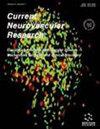Anti-inflammatory effect of ginsenoside Rg1 on LPS-induced septic encephalopathy and associated mechanism.
IF 2
4区 医学
Q3 CLINICAL NEUROLOGY
引用次数: 8
Abstract
BACKGROUND Sepsis frequently occurs in patients after infection and is highly associated with death. Septic encephalopathy is characterized by dysfunction of the central nervous system, of which the root cause is a systemic inflammatory response. Sepsis-associated encephalopathy is a severe disease that frequently occurs in children, resulting in high morbidity and mortality. OBJECTIVES In the present study, we aim to investigate the neuroprotective mechanism of ginsenoside Rg1 in response to septic encephalopathy. METHODS Effects of ginsenoside Rg1 on septic encephalopathy were determined by cell viability, cytotoxicity, ROS responses, and apoptosis assays and histological examination of brain. Inflammatory activities were evaluated by expression levels of IL-1β, IL-6, IL-10, TNF-α, and MCP-1 using qPCR and ELISA. Activities of signaling pathways in inflammation were estimated by the production of p-Erk1/2/Erk1/2, p-JNK/JNK, p-p38/p38, p-p65/p65, and p-IkBα/IkBα using western blot. RESULTS LPS simulation resulted in a significant increase in cytotoxicity, ROS responses, and apoptosis and a significant decrease in cell viability in CTX TNA2 cells, as well as brain damage in rats. Moreover, the production of IL-1β, IL-6, IL-10, TNF-α, and MCP-1 was significantly stimulated both in CTX TNA2 cells and in the brain, which confirmed the establishment of vitro and in vivo models of septic encephalopathy. The damage and inflammatory responses induced by LPS were significantly decreased by treatment with Rg1. Western blot analyses indicated Rg1 significantly decreased the production of p-Erk1/2/Erk1/2, p-JNK/JNK, p-p38/p38, p-p65/p65, and p-IkBα/IkBα in LPS-induced CTX TNA2 cells and in the brain. CONCLUSIONS These findings suggested that Rg1 inhibited the activation of NF-κB and MAPK signaling pathways, which activate the production of proinflammatory cytokines and chemokines. The findings of this study suggest that ginsenoside Rg1 is a candidate treatment for septic encephalopathy.人参皂苷Rg1对LPS诱导的脓毒性脑病的抗炎作用及相关机制。
脓毒症经常发生在感染后的患者中,并且与死亡高度相关。感染性脑病以中枢神经系统功能障碍为特征,其根本原因是全身性炎症反应。败血症相关脑病是一种常见于儿童的严重疾病,其发病率和死亡率都很高。目的探讨人参皂苷Rg1对脓毒性脑病的神经保护作用机制。方法采用细胞活力、细胞毒性、ROS反应、细胞凋亡及脑组织组织学检查观察人参皂苷Rg1对脓毒性脑病的治疗作用。采用qPCR和ELISA检测IL-1β、IL-6、IL-10、TNF-α和MCP-1的表达水平,评价炎症活性。通过western blot检测p-Erk1/2/Erk1/2、p-JNK/JNK、p-p38/p38、p-p65/p65和p-IkBα/IkBα的表达,估计炎症过程中信号通路的活性。结果slps模拟可显著增加CTX TNA2细胞的细胞毒性、ROS反应和凋亡,显著降低细胞活力,并导致大鼠脑损伤。此外,CTX TNA2细胞和脑组织中IL-1β、IL-6、IL-10、TNF-α和MCP-1的产生均受到显著刺激,证实了脓毒性脑病体外和体内模型的建立。Rg1可显著降低LPS引起的损伤和炎症反应。Western blot分析显示,Rg1显著降低lps诱导的CTX TNA2细胞和脑组织中p-Erk1/2/Erk1/2、p-JNK/JNK、p-p38/p38、p-p65/p65和p-IkBα/IkBα的产生。结论Rg1可抑制NF-κB和MAPK信号通路的激活,从而激活促炎细胞因子和趋化因子的产生。本研究结果提示人参皂苷Rg1是一种治疗感染性脑病的候选药物。
本文章由计算机程序翻译,如有差异,请以英文原文为准。
求助全文
约1分钟内获得全文
求助全文
来源期刊

Current neurovascular research
医学-临床神经学
CiteScore
3.80
自引率
9.50%
发文量
54
审稿时长
3 months
期刊介绍:
Current Neurovascular Research provides a cross platform for the publication of scientifically rigorous research that addresses disease mechanisms of both neuronal and vascular origins in neuroscience. The journal serves as an international forum publishing novel and original work as well as timely neuroscience research articles, full-length/mini reviews in the disciplines of cell developmental disorders, plasticity, and degeneration that bridges the gap between basic science research and clinical discovery. Current Neurovascular Research emphasizes the elucidation of disease mechanisms, both cellular and molecular, which can impact the development of unique therapeutic strategies for neuronal and vascular disorders.
 求助内容:
求助内容: 应助结果提醒方式:
应助结果提醒方式:


